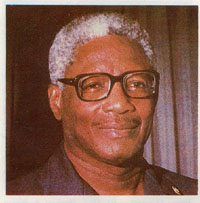May 26th marked 45 years since Guyana became independent. During that time other countries, such as Malaysia, Singapore and the Maldives, that had been far behind Guyana in development have surpassed it.
So, while this sprawling country, larger than England and rich in natural resources, marked its 45th year as an independent nation better economically than it was a decade ago, it should have been much better developed and far more prosperous than it now is.
Today, Guyana’s economy is one of the strongest in the Caribbean and as its President Bharrat Jagdeo observed, “the country is now enjoying its “sixth consecutive year of strong economic growth – and has been one of the fastest growing economies in CARICOM every year since 2006”.
These statements are supported by the International Monetary Fund (IMF) whose reports indicate that between 2006 and 2010, Guyana enjoyed average economic growth of 4 per cent – an enviable achievement among CARICOM countries, the majority of whose economies have contracted especially since the global financial crisis that started in late 2008.
Few would dispute that the two decades between 1976 and 1996 were ‘lost’ years for Guyana – a period when, despite its vast natural resources, the country experienced high debt, collapse of social and physical infrastructure and large-scale migration of its best educated people. The economic decline came in the wake of the nationalisation in the 1970’s of much of the productive sector of the country – the sugar, bauxite and banking industries – for which it was punished by the industrialised nations and the institutions such as the IMF which they controlled. Improvements in the post-1996 period had its foundation in an Economic Recovery Programme introduced by the then government headed by President Desmond Hoyte.
Some may argue that the decline of national cohesion began even earlier and was particularly evident between 1962 and 1964, when racial riots and civil strife marred the country leaving a bitter legacy that continues to be the silent poison that runs through the body politic of the nation.
At independence Guyana was hardly one nation. It was more two societies coexisting with no appetite to return to past racial disturbances. But, it would be untrue to say that, at the time, the country, as a whole, had overcome its racial divide in fulfilment of its national motto, “One people, One nation, One destiny”.
This is still evident today in the fact that the main platform of the smallest of the three main political parties, the Alliance for Change (AFC), expresses the belief that, “if Guyana is to meaningfully experience the notion of independence”, it “must adopt considered measures to cultivate and husband ethnic unity and harmony”. The main opposition, Peoples National Congress/Reform (PNC/R) puts it less frontally, by its own statement that Guyana will attract investment to boost its economic development when an image is presented to the world of a “united, reconciled, purposeful and serious nation”.
Nonetheless, it would also not be true to say that racial division remains a hallmark of the daily lives of the Guyanese people. No such division is evident among most people under the age of 30 who have no living experience of racial strife and are far more integrated than previous generations as a result of modern communication, access to global information, and a growing common culture.
The two main political parties – the opposition PNC/R and the ruling Peoples Progressive Party/Civic (PPP/C) – are both still perceived to be rooted in race with the former’s support coming from people of African descent and the latter’s from people of Indian descent.
One of the difficulties that each of these two main parties face in the upcoming elections for the Presidency and membership of the parliament, is that neither of them have outstanding persons in their leadership who are of the other race.
This forthcoming election is a good opportunity for both the PPP and the PNC to broaden the base of their support by placing credible persons of all races in leadership positions. And, it should not be for tokenism, but for good political sense and in the interest of the nation. For, until all the political parties are regarded as racially cohesive and representative, the fear of neglect on racial grounds will continue.
Since the late 1970’s and until recently, the economy of Guyana has been the sick man of the Caribbean falling second only to Haiti as the poorest country in the region. Much of that has changed, and the economy looks set to change for the better even more.
This view is based not only the economic growth of the last few years, but on Guyana’s rich natural resources, and the diversification of its productive base to exploit these resources more effectively.
Twenty years ago, Guyana depended almost entirely on export earnings from sugar, rice and bauxite. Today, while these three commodities remain important, the agricultural sector has been diversified and Guyana is now a net exporter of agricultural products. Its other resources, especially gold, will catapult the country’s economic growth in the future.
A few weeks ago, Guyana received US$40 million from Norway as payment for 8 million tonnes of carbon saved by preserving millions of acres of Guyana’s huge forests. President Jagdeo has indicated that the country “can expect to receive in excess of a quarter of a billion dollars in similar transactions before 2015”.
Managed efficiently, these revenues could transform Guyana and allow it to recover from the ‘lost’ years – but they must also be distributed fairly and equitably through transparent machinery. Broad-based political parties in government and the legislature would be essential to that process.






